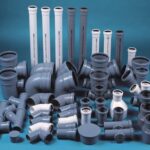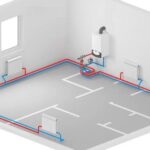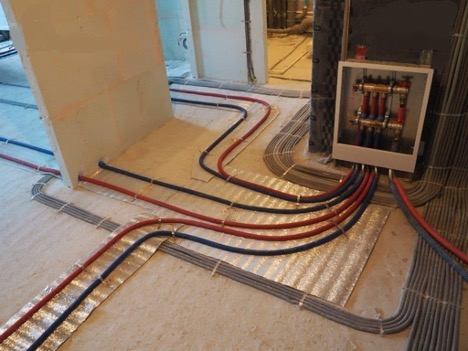How to cut into a sewer cast iron pipe: installation of ductile iron
In modern construction and repair of sewer systems, special attention is paid to the quality and reliability of installation. Cast iron sewer systems, due to their strength and durability, remain in demand. However, for many, the question arises: how to cut into a cast iron sewer pipe? This process requires certain knowledge and skills.
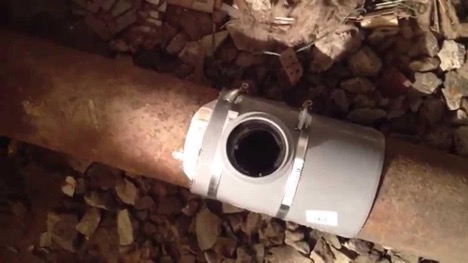
The content of the article
Basics of installing socketless cast iron sewer systems
Installation of a socketless sewer system is one of the most effective solutions for ensuring the tightness and reliability of the sewer system. Installation of cast iron sewer pipes begins with the preparation of tools and materials, including: rubber seals, special clamps and lubricant for sealing.
It is important to pay attention to pipe connection technology. Connecting cast iron sewer pipes involves the use of socketless connections, which greatly simplifies the installation process and ensures high tightness of the system.
Installation instructions: how to install sewer pipes
The process of installing cast iron sewers requires care and following the instructions. First, you should familiarize yourself with the main stages of work:
- Preparing the sewer riser and the necessary tools.
- Cutting off a piece of cast iron sewer riser in the right place using a grinder or a special knife for cast iron.
- Treating pipe edges to prevent corrosion.
- Installing O-rings and lubricating seals.
- Inserting a new section of pipe into the riser.
By following these steps, you will ensure a reliable and long-lasting sewer pipe connection.
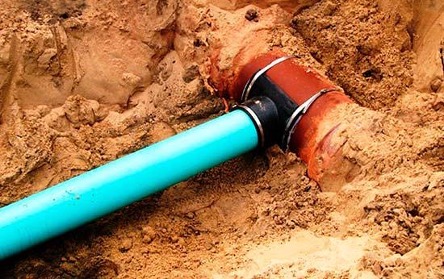
How to avoid mistakes at work
To ensure the reliability and durability of the sewer system, it is important to correctly connect cast iron sewer pipes. Let's look at the key points to avoid mistakes when performing this task.
Before starting work, you must carefully prepare:
- ensure that all cast iron pipes and fittings meet the required standards and are free of visible damage;
- Accurate measurements and marking of the sewer route will help avoid installation errors.
Selecting quality seals and sealants is critical to ensuring tight connections. Use only materials recommended by the manufacturer that are suitable for working with cast iron pipes.
Compliance with connection technology:
- Before connecting, the surfaces of pipes and fittings must be thoroughly cleaned of dirt, rust and dust.
- The O-rings must be installed strictly in the center of the connection, without distortion or damage.
- When using installation tools, it is important to ensure an even distribution of force to avoid damage to the seals.
Quality control
After installation of each connection, a visual inspection and a leak test must be carried out. This can be done by running a small amount of water through the system under controlled pressure.
When installing cast iron sewer pipes, it is important to strictly follow the regulatory documents and technical regulations governing the process of installing sewer systems.This will help avoid mistakes associated with the wrong choice of materials or installation methods.
Following these recommendations will allow you to effectively and without errors connect cast iron sewer pipes, ensuring the durability and reliability of the entire system.
Advantages of installing ductile iron pipes
Installation of ductile iron pipes (high-strength nodular cast iron) has a number of advantages that make this material one of the best choices for sewerage and water supply systems. Let's look at the key advantages:
- Ductile iron pipes are characterized by high tensile strength. They are also characterized by wear resistance due to the structure of spherical graphite. This ensures a long service life of the system. It also significantly reduces the need for repair or replacement.
- Ductile iron is highly resistant to corrosion processes, which is especially important for sewer systems. After all, they are constantly in contact with an aggressive environment. This increases the service life of the pipes and reduces maintenance costs.
- Due to the high density of cast iron, ductile iron pipes effectively absorb the noise of water flow. You get quieter operation of the system compared to pipes made from other materials.
- Despite the apparent complexity, installation of socketless cast iron sewerage is possible without specialized equipment. You get a modular system and use O-rings. But this greatly simplifies and speeds up the installation process.
- Cast iron is an environmentally friendly material and can be recycled without harming the environment. This makes ductile iron the preferred choice for construction in conditions of increased environmental requirements.
- Ductile iron pipes are able to withstand significant temperature fluctuations without losing their performance qualities, which allows them to be used in various climatic conditions.
These advantages make the installation of ductile iron pipes the optimal solution for modern sewer and water supply systems, ensuring their reliability, durability and environmental friendliness.

